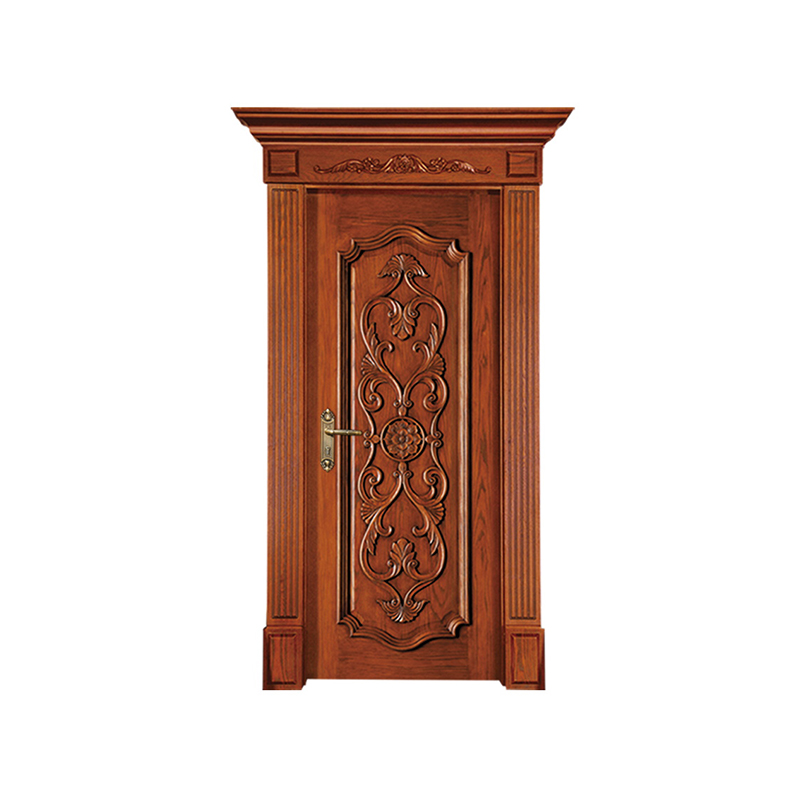We provide quality products and services to customers from all over the world.
How Does a Wooden Door Differ from a Veneer Door?

Choosing the right type of door is essential for both functionality and aesthetics in homes and commercial spaces. Wooden doors and veneer doors are popular options, but they have distinct characteristics. Understanding the differences can help homeowners, builders, and designers make informed decisions.
Material Composition
The primary difference between a wooden door and a veneer door lies in their construction.
| Door Type | Core Material |
Surface Material |
| Wooden Door | Solid wood |
Solid wood throughout |
| Veneer Door | Engineered wood or MDF |
Thin layer of real wood veneer |
A wooden door is made entirely from solid wood, providing uniform strength and natural grain throughout the entire door. In contrast, a veneer door has a core of engineered wood or MDF, covered with a thin layer of real wood, giving the appearance of solid wood without the same material thickness.
Durability and Strength
Wooden doors generally offer greater durability due to their solid construction. They are less prone to warping and can handle heavy use over time. Veneer doors, while durable, rely on the strength of the core material. The thin wood layer on top can be more susceptible to scratches, dents, or chipping if not properly maintained.
Key points:
- Solid wooden doors can last decades with proper care
- Veneer doors are lighter and easier to install but may require more careful handling
- Moisture and heat can affect veneer doors more easily than solid wooden doors
Appearance and Aesthetics
Both types of doors can be attractive, but the visual impact differs. Wooden doors showcase the natural grain of the wood consistently throughout the door, giving a sense of authenticity and warmth. Veneer doors can mimic the appearance of solid wood at a lower cost, offering a wide variety of finishes and colors.
Considerations:
- Wooden doors can be sanded and refinished multiple times
- Veneer doors have a limited thickness of real wood, which may limit refinishing
- Veneer allows for more design flexibility with different grains and textures
Maintenance and Longevity
Maintenance requirements differ due to material composition. Wooden doors may require occasional polishing or treatment to maintain their natural look and prevent damage from moisture or pests. Veneer doors, on the other hand, need gentle cleaning to avoid peeling or surface damage.
Tips for both door types:
- Keep away from prolonged exposure to water
- Clean with mild, non-abrasive products
- Inspect edges and surfaces periodically for signs of wear
With proper care, a wooden door can outlast a veneer door in high-traffic areas, while veneer doors offer good performance in controlled indoor environments.
Cost Considerations
Wooden doors typically have a higher initial cost due to the solid wood material and labor involved in construction. Veneer doors provide a budget-friendly alternative while maintaining the visual appeal of wood. This makes veneer doors suitable for projects with cost constraints or where weight and ease of installation are considerations.
A wooden door differs from a veneer door mainly in material composition, durability, appearance, and maintenance requirements. Wooden doors provide long-lasting strength and a natural look, while veneer doors offer versatility and affordability. Understanding these differences allows homeowners and designers to select the right door for their space, balancing performance, aesthetics, and cost. Choosing the appropriate door ensures both functional reliability and visual appeal in residential and commercial environments.
Interested in cooperation or have questions?
![]() +86-13857003056
+86-13857003056
![]() No. 27 Lianhuashan Avenue, Jiangshan Economic Development, Jiangshan, Quzhou, Zhejiang, China
No. 27 Lianhuashan Avenue, Jiangshan Economic Development, Jiangshan, Quzhou, Zhejiang, China

 English
English русский
русский Français
Français Español
Español عربى
عربى
